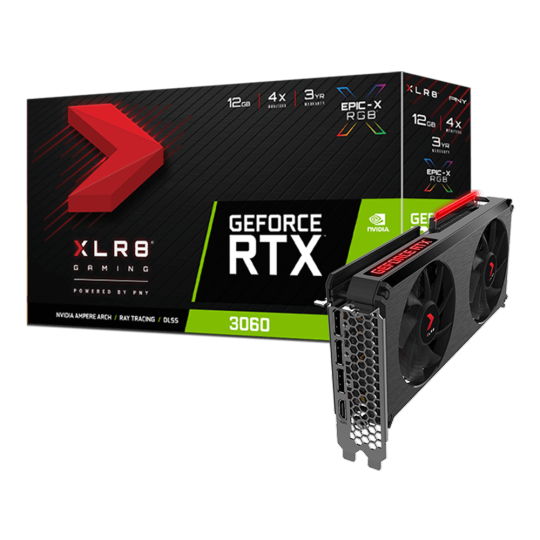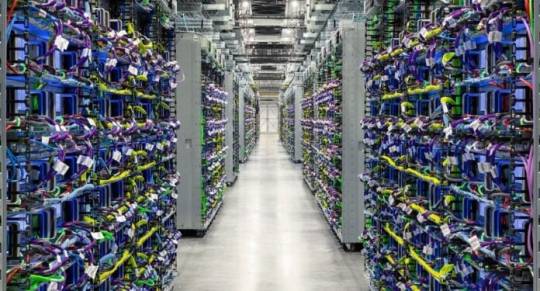#tensorcore
Explore tagged Tumblr posts
Text


PNY- The GeForce RTX™ 3060
Elevate your gaming experience with the GeForce RTX™ 3060, powered by NVIDIA's 2nd generation RTX architecture. Embrace stunning performance with advanced Ray Tracing and Tensor Cores, streaming multiprocessors, and blazing-fast G6 memory.
#GeForceRTX3060#AmperePower#GamingRevolution#luckyfalcon#pny#dubaimena#uae#abudhabi#NVIDIA#Gaming#RTXArchitecture#RayTracing#TensorCores#GamingPerformance#GraphicsCard
0 notes
Text
Future of AI Innovations: Secrets Behind the Next Tech Wave
As detailed in our previous exploration, AI in 2025: Transform Your Business or Risk Obsolescence, artificial intelligence (AI) is reshaping industries with breakthroughs like AMD’s MI400 and DeepMind’s ANCESTRA. Now, with the latest advancements as of June 20, 2025, this report dives deeper into the cutting-edge trends driving AI’s next wave. From revolutionary hardware to ethical frontiers, we uncover the innovations poised to redefine business and society, offering precise, actionable strategies to help you lead in this transformative era.
Latest AI Breakthroughs as of June 20, 2025
Hardware Leap: AMD’s MI405, launched June 19, boosts AI training efficiency by 50% over Nvidia’s H200, slashing costs and emissions (AMD MI405).
Autonomous AI: Anthropic’s Claude 4.2 introduces adaptive multi-agent orchestration, accelerating research 25x for complex workflows (Claude 4.2).
Creative AI: DeepMind’s ANCESTRA 3.0 generates real-time 12K holographic experiences, blending AI with spatial computing (ANCESTRA 3.0).
Education AI: OpenAI’s ChatGPT Edu Pro, with predictive learning paths, improves student outcomes by 20% but sparks autonomy debates (ChatGPT Edu Pro).
Safety Frontier: xAI’s Grok 3.3 exposes critical vulnerabilities in OpenAI’s o3-Pro, urging global safety protocols (Grok 3.3 Safety).
Healthcare AI: Google’s MedGemini 2.0 achieves 95% accuracy in diagnosing rare diseases, integrating multimodal patient data (MedGemini 2.0).
Hardware Revolution: AMD MI405 and the Compute Horizon
Launch: June 19, 2025
Details: AMD’s MI405, an evolution of the MI400, delivers 50% higher token-per-dollar efficiency than Nvidia’s H200, with 35% lower carbon emissions. Integrated with AMD’s Helios 3 rack system, it supports hyperscale AI training and aligns with a 30x energy efficiency goal by 2032. Its TensorCore 2.0 architecture optimizes for ternary-bit models, reducing compute demands by 20% (AMD MI405).
Impact: A SaaS provider cut AI inference costs by 40% ($100,000/month), enabling SMEs to scale generative AI. Quantum-AI hybrids, tested by IBM, promise 100x speedups by 2035.
Challenges: AMD’s ROCm 6.0 software lags Nvidia’s CUDA 12, requiring developer retraining. Chip supply chains face disruptions from U.S.-China trade restrictions.
1 note
·
View note
Photo

🔥 Powering the Future with Cutting-Edge AI Tech! 🔥 Nguyễn Công PC just unveiled a beast of an AI server, boasting 7 NVIDIA RTX 5090 GPUs. This powerhouse, worth over $30,000 CAD, crushes other systems with a massive 224GB memory and a staggering 4000W+ power draw. 🖥️ Harnessing the Blackwell architecture, these GPUs push AI performance 154% beyond previous models, all while making AI training more cost-effective with lower precision support. It's a game-changer for AI professionals wanting big performance without breaking the bank. Could this be the ultimate setup for AI innovation? Share your thoughts! 💭 #AIServer #RTX5090 #NguyenCongPC #TechInnovation #AIPerformance #CuttingEdgeTechnology #FutureOfAI #PowerfulComputing #CostEffectiveAI #AIPros #TechEnthusiast #GamingGPUs #BlackwellArchitecture #TensorCores 👉 Comment your dream setup below!
0 notes
Text
Introducing Trillium, Google Cloud’s sixth generation TPUs

Trillium TPUs
The way Google cloud engage with technology is changing due to generative AI, which is also creating a great deal of efficiency opportunities for corporate effect. However, in order to train and optimise the most powerful models and present them interactively to a worldwide user base, these advancements need on ever-increasing amounts of compute, memory, and communication. Tensor Processing Units, or TPUs, are unique AI-specific hardware that Google has been creating for more than ten years in an effort to push the boundaries of efficiency and scale.
Many of the advancements Google cloud introduced today at Google I/O, including new models like Gemma 2, Imagen 3, and Gemini 1.5 Flash, which are all trained on TPUs, were made possible by this technology. Google cloud thrilled to introduce Trillium, Google’s sixth-generation TPU, the most powerful and energy-efficient TPU to date, to offer the next frontier of models and empower you to do the same.
Comparing Trillium TPUs to TPU v5e, a remarkable 4.7X boost in peak computation performance per chip is achieved. Google cloud increased both the Interchip Interconnect (ICI) bandwidth over TPU v5e and the capacity and bandwidth of High Bandwidth Memory (HBM). Third-generation SparseCore, a dedicated accelerator for handling ultra-large embeddings frequently found in advanced ranking and recommendation workloads, is another feature that Trillium has. Trillium TPUs provide faster training of the upcoming generation of foundation models, as well as decreased latency and cost for those models. Crucially, Trillium TPUs are more than 67% more energy-efficient than TPU v5e, making them Google’s most sustainable TPU generation to date.
Up to 256 TPUs can be accommodated by Trillium in a single high-bandwidth, low-latency pod. In addition to this pod-level scalability, Trillium TPUs can grow to hundreds of pods using multislice technology and Titanium Intelligence Processing Units (IPUs). This would allow a building-scale supercomputer with tens of thousands of chips connected by a multi-petabit-per-second datacenter network.
The next stage of Trillium-powered AI innovation
Google realised over ten years ago that a novel microprocessor was necessary for machine learning. They started developing the first purpose-built AI accelerator in history, TPU v1, in 2013. In 2017, Google cloud released the first Cloud TPU. Many of Google’s best-known services, including interactive language translation, photo object recognition, and real-time voice search, would not be feasible without TPUs, nor would cutting-edge foundation models like Gemma, Imagen, and Gemini. Actually, Google Research’s foundational work on Transformers the algorithmic foundations of contemporary generative AI Fwas made possible by the size and effectiveness of TPUs.
Compute performance per Trillium chip increased by 4.7 times
Since TPUs Google cloud created specifically for neural networks, Google cloud constantly trying to speed up AI workloads’ training and serving times. In comparison to TPU v5e, Trillium performs 4.7X peak computing per chip. We’ve boosted the clock speed and enlarged the size of matrix multiply units (MXUs) to get this level of performance. Additionally, by purposefully offloading random and fine-grained access from TensorCores, SparseCores accelerate workloads that involve a lot of embedding.
The capacity and bandwidth of High Bandwidth Memory (HBM) with 2X ICI
Trillium may operate with larger models with more weights and larger key-value caches by doubling the HBM capacity and bandwidth. Higher memory bandwidth, enhanced power efficiency, and a flexible channel architecture are made possible by next-generation HBM, which also boosts memory throughput. For big models, this reduces serving latency and training time. This equates to twice the model weights and key-value caches, allowing for faster access and greater computational capability to expedite machine learning tasks. Training and inference tasks may grow to tens of thousands of chips with double the ICI bandwidth thanks to a clever mix of 256 chips per pod specialised optical ICI interconnects and hundreds of pods in a cluster via Google Jupiter Networking.
The AI models of the future will run on trillium
The next generation of AI models and agents will be powered by trillium TPUs, and they are excited to assist Google’s customers take use of these cutting-edge features. For instance, the goal of autonomous car startup Essential AI is to strengthen the bond between people and computers, and the company anticipates utilising Trillium to completely transform the way organisations function. Deloitte, the Google Cloud Partner of the Year for AI, will offer Trillium to transform businesses with generative AI.
Nuro is committed to improving everyday life through robotics by training their models with Cloud TPUs. Deep Genomics is using AI to power the future of drug discovery and is excited about how their next foundational model, powered by Trillium, will change the lives of patients. With support for long-context, multimodal model training and serving on Trillium TPUs, Google Deep Mind will also be able to train and serve upcoming generations of Gemini models more quickly, effectively, and with minimal latency.
AI-powered trillium Hypercomputer
The AI Hypercomputer from Google Cloud, a revolutionary supercomputing architecture created especially for state-of-the-art AI applications, includes Trillium TPUs. Open-source software frameworks, flexible consumption patterns, and performance-optimized infrastructure including Trillium TPUs are all integrated within it. Developers are empowered by Google’s dedication to open-source libraries like as JAX, PyTorch/XLA, and Keras 3. Declarative model descriptions created for any prior generation of TPUs can be directly mapped to the new hardware and network capabilities of Trillium TPUs thanks to support for JAX and XLA. Additionally, Hugging Face and they have teamed up on Optimum-TPU to streamline model serving and training.
Since 2017, SADA (An Insight Company) has won Partner of the Year annually and provides Google Cloud Services to optimise effect.
The variable consumption models needed for AI/ML workloads are also provided by AI Hypercomputer. Dynamic Workload Scheduler (DWS) helps customers optimise their spend by simplifying the access to AI/ML resources. By scheduling all the accelerators concurrently, independent of your entry point Vertex AI Training, Google Kubernetes Engine (GKE), or Google Cloud Compute Engine flex start mode can enhance the experience of bursty workloads like training, fine-tuning, or batch operations.
Lightricks is thrilled to recoup value from the AI Hypercomputer’s increased efficiency and performance.
Read more on govindhtech.com
#trilliumtpu#generativeAI#GoogleCloud#Gemma2#Imagen3#supercomputer#microprocessor#machinelearning#Gemini#aimodels#geminimodels#Supercomputing#HyperComputer#VertexAI#googlekubernetesengine#news#technews#technology#technologynews#technologytrends
0 notes
Photo

RT @NVIDIAAIDev: Learn how to activate your #TensorCores in @TensorFlow with just 2 lines of code for up to 3X speedup on #AI training. Register here: https://t.co/HTgfLh5CTX
4 notes
·
View notes
Photo

Embark on a journey of unprecedented strategy with Tensor Chess. Download the App to start your strategic adventure! https://goo.gl/YBCXRc #chess #tensorchess #newchessgame #tensorcore #tensorchessgame #grandmasterendorsements #tensor80 https://ift.tt/3ezepB9
0 notes
Photo

"[Project] torchfunc: PyTorch functions to improve performance, analyse and make your deep learning life easier."- Detail: Hi guys,I'd like to share another PyTorch related project some of you might find helpful and interesting. Here is GitHub repository and here is documentation.Also, if you have any suggestions/improvements/questions I will be glad to help.Now, description (taken from project's readme with minor adjustments):What is it?torchfunc is library revolving around PyTorch with a goal to help you with:Improving and analysing performance of your neural network (e.g. Tensor Cores compatibility)Record/analyse internal state of torch.nn.Module as data passes through itDo the above based on external conditions (using single Callable to specify it)Day-to-day neural network related duties (model size, seeding, performance measurements etc.)Get information about your host operating system, CUDA devices and othersQuick examplesGet instant performance tips about your module. All problems described by comments will be shown by torchfunc.performance.tips:class Model(torch.nn.Module): def __init__(self): super().__init__() self.convolution = torch.nn.Sequential( torch.nn.Conv2d(1, 32, 3), torch.nn.ReLU(inplace=True), # Inplace may harm kernel fusion torch.nn.Conv2d(32, 128, 3, groups=32), # Depthwise is slower in PyTorch torch.nn.ReLU(inplace=True), # Same as before torch.nn.Conv2d(128, 250, 3), # Wrong output size for TensorCores ) self.classifier = torch.nn.Sequential( torch.nn.Linear(250, 64), # Wrong input size for TensorCores torch.nn.ReLU(), # Fine, no info about this layer torch.nn.Linear(64, 10), # Wrong output size for TensorCores ) def forward(self, inputs): convolved = torch.nn.AdaptiveAvgPool2d(1)(self.convolution(inputs)).flatten() return self.classifier(convolved) # All you have to do print(torchfunc.performance.tips(Model())) Seed globaly (including numpy and cuda), freeze weights, check inference time and model size:# Inb4 MNIST, you can use any module with those functions model = torch.nn.Linear(784, 10) torchfunc.seed(0) frozen = torchfunc.module.freeze(model, bias=False) with torchfunc.Timer() as timer: frozen(torch.randn(32, 784) print(timer.checkpoint()) # Time since the beginning frozen(torch.randn(128, 784) print(timer.checkpoint()) # Since last checkpoint print(f"Overall time {timer}; Model size: {torchfunc.sizeof(frozen)}") Record and sum per-layer and per-neuron activation statistics as data passes through network:# Still MNIST but any module can be put in it's place model = torch.nn.Sequential( torch.nn.Linear(784, 100), torch.nn.ReLU(), torch.nn.Linear(100, 50), torch.nn.ReLU(), torch.nn.Linear(50, 10), ) # Recorder which sums all inputs to layers recorder = torchfunc.hooks.recorders.ForwardPre(reduction=lambda x, y: x+y) # Record only for torch.nn.Linear recorder.children(model, types=(torch.nn.Linear,)) # Train your network normally (or pass data through it) ... # Activations of all neurons of first layer! print(recorder[1]) # You can also post-process this data easily with apply InstallationpipLatest release:pip install --user torchfuncNightly:pip install --user torchfunc-nightlyOne could also check the project out with Docker, see more info in README as this post is getting long I guessBTW. There is also another project of mine torchdata revolving around data processing with PyTorch, might be of interest to some of you as well (it was announced one week ago here as well, but in case you missed).. Caption by szymonmaszke. Posted By: www.eurekaking.com
0 notes
Text
Volvo goes with Nvidia Xavier for assisted driving
Volvo has teamed up with Nvidia to use the latter’s Drive AGX Xavier platform in its next generation of cars set to hit the road early next decade.
An earlier partnership between the pair said artificial intelligence (AI)-enabled vehicles would be on the market in 2021.
Although Xavier was touted as being built to handle level 5, or fully autonomous, driving when launched at the start of the year, the companies said that the initial release will be “Level 2+”.
Further, Xavier would be used for “new connectivity services, energy management technology, in-car personalisation options”, the companies said.
“Autopilot done right will bring a jump in safety and driving comfort. Your car will drive you and constantly watch out for you. Making this possible will require sensor architecture, AI software, computing, and safety technology like nothing the world has ever made,” Nvidia CEO Jensen Huang said during his GTC Europe keynote.
See: Autonomous driving levels 0 to 5: Understanding the differences (TechRepublic)
The companies said they are working on “uniquely integrating 360-degree surround perception”, along with a driver monitoring system.
Nvidia rates its Drive AGX Xavier system as being capable of 30 trillion operations per second and using only 30 watts of power across six different processors on the board.
At the start of the year, Nvidia inked a similar deal with Continental that will be the Drive platform used from 2021.
Alongside Xavier, Nvidia also has its Pegasus platform, which contains a pair of Xavier system-on-a-chip processors and a pair of TensorCore GPUs, that is rated at 320 trillion operations per second.
During Wednesday’s keynote, Nvidia also announced a new set of libraries for GPU-accelerated analytics and machine learning, dubbed Rapids.
In June, Nvidia unveiled Kubernetes on GPUs for use in multi-cloud GPU clusters.
Related Coverage
Nvidia RAPIDS accelerates analytics and machine learning
New open source libraries from Nvidia provide GPU acceleration of data analytics an machine learning. Company claims 50x speed-ups over CPU-only implementations.
Nvidia outlines inference platform, lands Japan’s industrial giants as AI, robotics customers
The news highlights Nvidia’s traction in AI and the data center.
Nvidia takes a hit on weak Q3 guidance
The graphics chipmaker’s second quarter financial results show growth is slowing compared to previous quarters.
Nvidia unveils new GPU architecture for computer graphics rendering
The Turing Architecture combines ray-tracing and AI inference for a new kind of hybrid rendering.
Google Cloud adds support for Nvidia’s Tesla P4 GPU (TechRepublic)
The compute accelerator is optimized for graphics-intensive applications and machine learning inference.
Source: https://bloghyped.com/volvo-goes-with-nvidia-xavier-for-assisted-driving/
0 notes
Photo

Embark on a journey of unprecedented strategy with Tensor Chess. Download the App to start your strategic adventure! https://goo.gl/YBCXRc #chess #tensorchess #newchessgame #tensorcore #tensorchessgame #grandmasterendorsements #tensor80 https://ift.tt/3ezepB9
0 notes
Photo

Next Generation Artificial Intelligence Engine with eight Distinct Game modes and a Cloud Based Analytical Power Plant (The #TensorCore) for the ultimate challenge in strategic gaming. The #TensorCore is comprised of two elements. An engine residing on the phone processes game data, and the Server based core assists by enabling us to implement multiple heuristic searches simultaneously, with no impact on your device We continually log data from games played against the Ai and this data is then used in a process of engine learning. This allows us to strengthen our chess engine to provide our users with the ultimate experience in strategic game play. The CORE is extremely powerful, but its strength is calibrated to a range of user-specified levels to give pleasure to players of all levels. Learn more about the #TensorCore by visiting our site, or getting the game today. www.tensorchess.com https://ift.tt/3hcnZcB
0 notes
Photo

Embark on a journey of unprecedented strategy with Tensor Chess. Download the App to start your strategic adventure! https://goo.gl/YBCXRc #chess #tensorchess #newchessgame #tensorcore #tensorchessgame #grandmasterendorsements #tensor80 https://ift.tt/37qMXS9
0 notes
Photo

Embark on a journey of unprecedented strategy with Tensor Chess. Download the App to start your strategic adventure! https://goo.gl/YBCXRc #chess #tensorchess #newchessgame #tensorcore #tensorchessgame #grandmasterendorsements #tensor80 https://ift.tt/37qMXS9
0 notes
Photo

Next Generation Artificial Intelligence Engine with eight Distinct Game modes and a Cloud Based Analytical Power Plant (The #TensorCore) for the ultimate challenge in strategic gaming. The #TensorCore is comprised of two elements. An engine residing on the phone processes game data, and the Server based core assists by enabling us to implement multiple heuristic searches simultaneously, with no impact on your device We continually log data from games played against the Ai and this data is then used in a process of engine learning. This allows us to strengthen our chess engine to provide our users with the ultimate experience in strategic game play. The CORE is extremely powerful, but its strength is calibrated to a range of user-specified levels to give pleasure to players of all levels. Learn more about the #TensorCore by visiting our site, or getting the game today. http://bit.ly/2IqAh13
0 notes